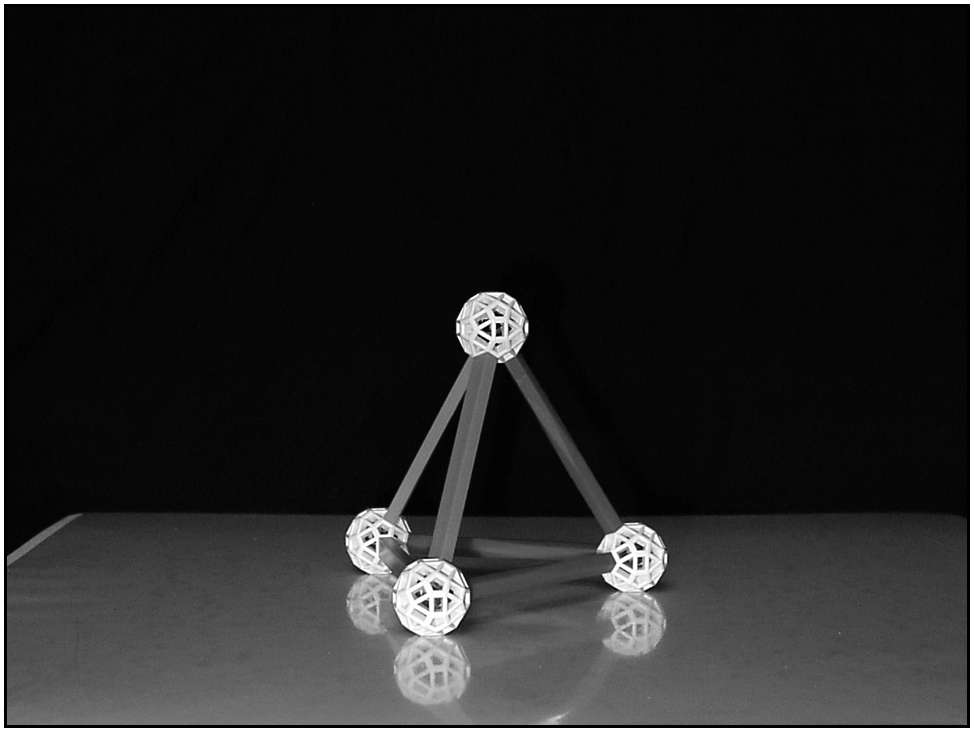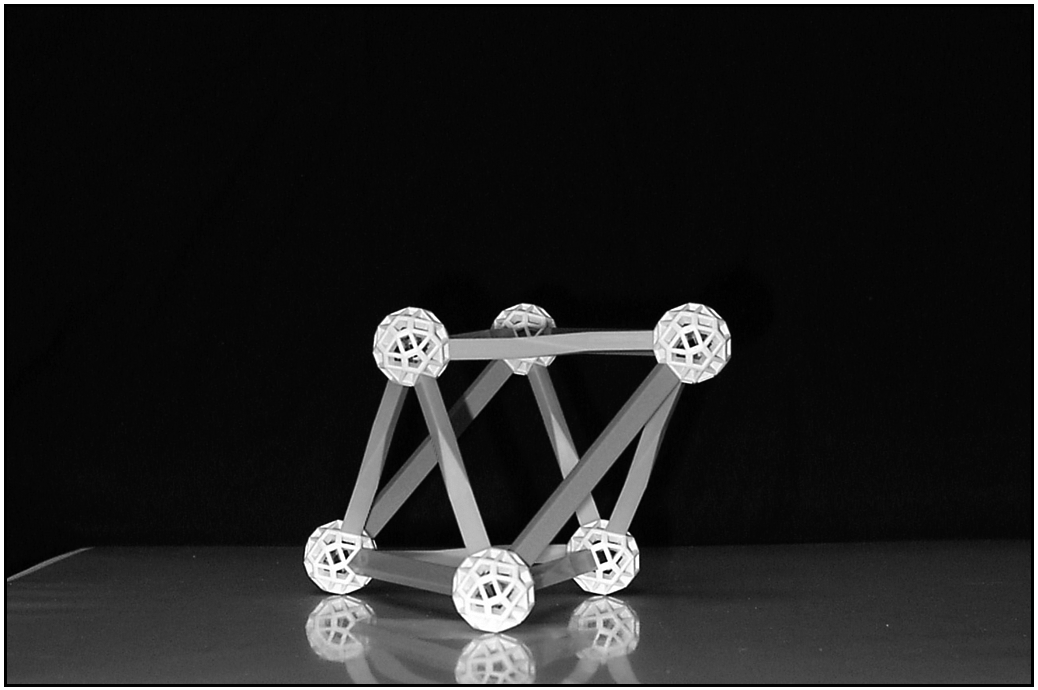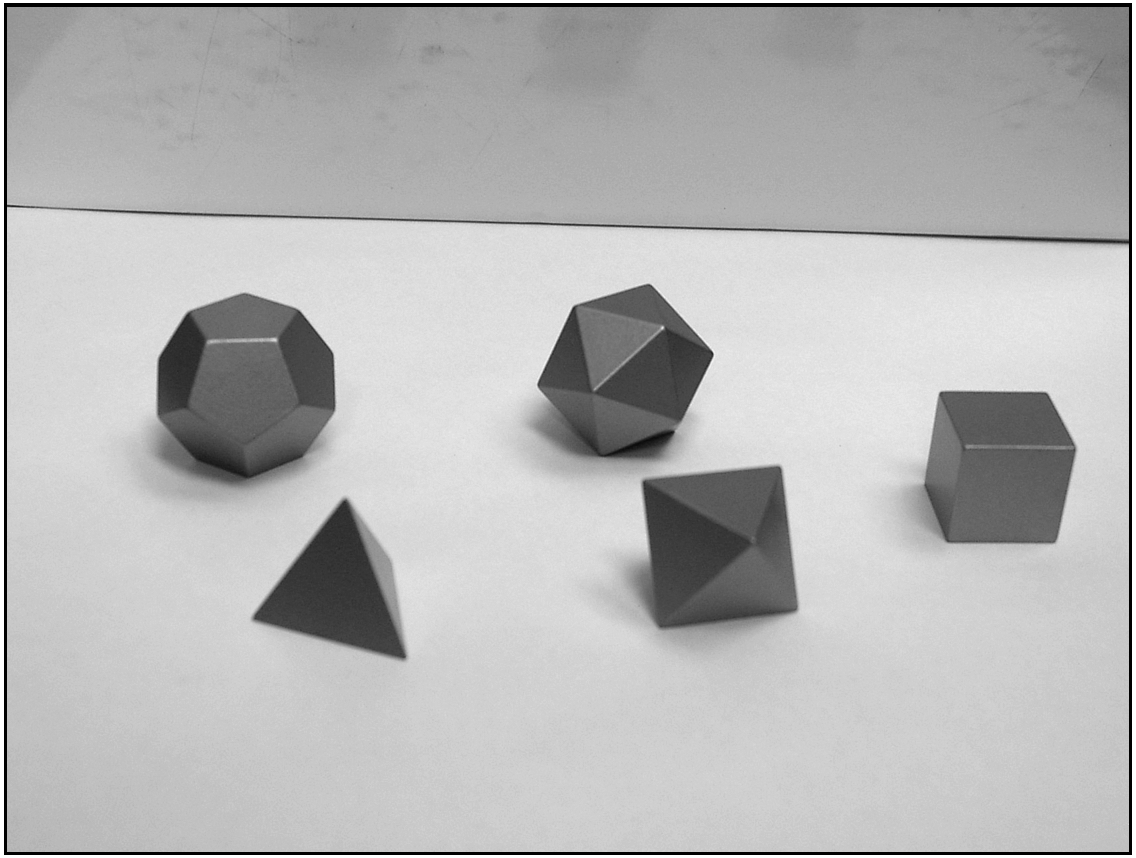Geometry: Platonic Solids
Platonic Solids
Although a sphere has a symmetry that cannot be beat, there are some fairly symmetric flat-sided figures, as the polyhedra are often referred to. Remember the cube? It's a prism with a square base, with one base directly over the other one. It is formally known as a right square prism with a twist. All of the edges are congruent. If you turn a cube around and look at it from the same vantage point (a view along a particular edge, for example), all you see are squares. It's bursting at the edges with symmetry, and it belongs to an elite group of polyhedra: the Platonic Solids. The Platonic solids are the most symmetric group of solids around. There are only five of them, and there is no hope of inventing a sixth. Five is all there are, and five is all there'll be, 'til the end of time.
It's time to meet the other four Platonic solids. You'll know a Platonic solid by its symmetry; they are the most symmetric polyhedra around. Let's see what you can learn by looking at the cube. It is a right prism with a square base. Its base is a regular polygon: a polygon that is equilateral and equiangular.
There are lots of regular polygons hanging around, ready to be studied. You should start simple and work your way up. A cube started from a square, but that's not the simplest regular polygon. An equilateral triangle is the simplest regular polygon. Is it possible to build an incredibly symmetric polyhedron using only an equilateral triangle? As it turns out, three of the five Platonic solids are made using equilateral triangles.
The second Platonic solid (and the first using triangles) is made by constructing a triangular prism using congruent equilateral triangles for the base and the lateral faces. Its official name is a tetrahedron, because it has four faces. I've made one for you in Figure 21.7.
Tangent Line
The cube is the only Platonic solid with a slang name. The cube is formally known as a hexahedron, because it has six faces.

Figure 21.7A tetrahedron.
There's more that you can do with triangles. The first triangular Platonic solid was a prism. The second triangular Platonic solid will come from a pyramid. Take four equilateral triangles and make the lateral surfaces of a square pyramid. Do this again, with four other equilateral triangles. Put your two structures together, as shown in Figure 21.8, and you have yet another triangular super-symmetric polyhedron. This polyhedron has eight faces and is called an octahedron.

Figure 21.8An octahedron.
To make the third triangular Platonic solid, you will need more triangles. Twenty of them, to be precise. If you put twenty equilateral triangles together (you'll need lots of patience and tape as well), you will have created the fourth Platonic solid, the icosahedron.
You can take a break from working with triangles. You've already used the square, so it's time to take the next regular polygon on the list, a regular pentagon. Attach twelve pentagons together carefully, and you will have created a dodecahedron.
You can make a set of these Platonic solids using four congruent equilateral triangles for the tetrahedron, eight congruent equilateral triangles for the octahedron, and twenty congruent equilateral triangles for the icosahedron. To make the cube you will need six congruent squares, and to make the dodecahedron you will need twelve congruent pentagons. Create the Platonic solids, hold them in your hands, twirl them around and really get to know them. A complete set is shown in Figure 21.9. You can't help but fall in love with these symmetrical solids.

Figure 21.9The Platonic solids are worth their weight in gold.
Excerpted from The Complete Idiot's Guide to Geometry © 2004 by Denise Szecsei, Ph.D.. All rights reserved including the right of reproduction in whole or in part in any form. Used by arrangement with Alpha Books, a member of Penguin Group (USA) Inc.
To order this book direct from the publisher, visit the Penguin USA website or call 1-800-253-6476. You can also purchase this book at Amazon.com and Barnes & Noble.







